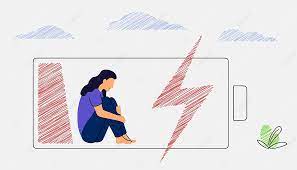
Today, the concept of “time poverty” has become an increasing concern, particularly among women. This condition reflects the chronic lack of time to balance professional, family, and personal demands. While both men and women are affected, women face a disproportionate impact. The phenomenon of time poverty affects mental health, well-being, and quality of life, and is increasingly viewed as a real “disease of the 21st century.”
What is Time Poverty?
Time poverty is a condition characterized by the constant feeling of lacking enough time to accomplish daily tasks and responsibilities. People feel that no matter how hard they try, they can never “catch up” with everything. This issue increasingly affects women, who continue to bear a disproportionate burden of household chores and family care, alongside their professional duties.
Why is Time Poverty Called a “Disease”?
Though the term “disease” is used metaphorically, time poverty can have significant negative impacts on physical and mental health. This condition leads to increased stress, anxiety, and exhaustion. Studies show that time poverty is associated with issues such as:
- Higher risk of burnout;
- Increased levels of chronic stress;
- Lower quality of sleep;
- Strained personal relationships.
Alarmingly, time poverty can also prevent women from participating in activities that foster their personal and professional growth, creating a cycle of reduced satisfaction and fulfillment.

How Time Poverty Affects Women
The burden of tasks contributing to time poverty affects women in a unique way due to a combination of social, cultural, and economic factors.
Domestic Work and Mental Load
Although women’s roles in society have evolved, many still bear a “double shift”: professional work and domestic labor. According to studies, women dedicate an average of more than two hours per day to domestic and family care tasks, while men spend less than half that time. This creates an additional mental load, meaning the cognitive effort required to manage multiple responsibilities.
Parental Responsibility
Women are often under greater pressure to play an active role in child-rearing, being more likely to make professional and personal sacrifices to ensure the children’s well-being and development. This parental responsibility adds pressure and significantly contributes to feelings of time poverty.

Inequality in the Workplace
In the professional world, women also face challenges that exacerbate time poverty. Although the number of women in leadership roles has increased, they still face barriers that hinder career progression and add to their workload. This adds further stress, especially in environments where productivity and availability are highly valued.
Effects on Health and Well-Being
Time poverty can have serious consequences for women’s physical and mental health.
Stress and Anxiety
The lack of time for rest and relaxation contributes to elevated levels of stress and anxiety. The constant pressure to meet all obligations leaves the nervous system in a near-constant state of alert, increasing the risk of developing chronic mental health problems.
Burnout Syndrome
Prolonged exhaustion, combined with a lack of time for leisure activities, increases the risk of burnout. This condition is common among professionals facing high work demands who lack time to recover mentally and emotionally.
Physical Health Problems
Time poverty also contributes to a deterioration in physical health. Lack of time can lead to poor nutrition, sedentarism, and even cardiovascular diseases exacerbated by constant stress.
Strategies to Combat Time Poverty
While time poverty is a reality for many women, several strategies can help improve time management and reduce this problem’s impact on health and well-being.
Setting Priorities
A key step in fighting time poverty is learning to set priorities. Focusing on the most important tasks and learning to say “no” when necessary are essential steps to create room for activities that truly matter.
Delegating Tasks
Delegating tasks is another crucial strategy for easing the workload. Sharing household and family responsibilities with other family members can reduce women’s pressure, giving them more time for themselves.
Planning and Organization
Planning and organization are essential tools to maximize time. Using an agenda or organization app can help visualize tasks and allocate time in a balanced way.
Setting Time Aside for Leisure and Well-Being
Though it may seem difficult, setting time aside for leisure is vital for mental and physical health. Engaging in a hobby, exercising, or simply relaxing helps recharge energy and reduce stress.
Time Poverty as a Social Problem
Time poverty is not a problem that exclusively affects women; it is a structural issue that must be addressed by society as a whole. Family support policies, greater work flexibility, and gender equality are essential to reduce the disproportionate time burden placed on women.
Workplace Flexibility Policies
Employers who offer flexible work hours and remote work options contribute to a better work-life balance. These policies can help reduce time poverty by allowing women to adapt their schedules to their family needs.
Gender Equality in Household Tasks
Promoting greater equality in sharing domestic tasks is crucial. Initiatives encouraging men to actively participate in domestic work and family care are essential to reducing women’s burden.
The Importance of Institutional Support
Governments and institutions have a critical role in creating family support policies. Longer paternity leave and access to quality, affordable childcare services are factors that can alleviate time poverty among women.
FAQs on Time Poverty
1: What is time poverty?
Time poverty is the feeling of not having enough time to complete daily tasks and responsibilities. It’s a condition marked by a constant sense of pressure and stress from being overburdened with duties.
2: Who is most affected by time poverty?
While time poverty affects both men and women, it disproportionately impacts women due to the combination of professional and domestic responsibilities.
3: How does time poverty affect mental health?
Time poverty contributes to higher stress and anxiety levels and is linked to burnout and physical health issues such as insomnia and cardiovascular diseases.
4: What are some strategies to fight time poverty?
Strategies include setting priorities, delegating tasks, maintaining a strict planning routine, and carving out time for leisure and self-care.

Conclusion
Time poverty is a reality that deeply affects women’s lives in the 21st century. Balancing professional and domestic responsibilities creates constant pressure, compromising physical and mental health. It is crucial for women, families, companies, and governments to recognize this problem and adopt measures to create a more balanced and inclusive environment. Combating time poverty is not just about individual well-being but about social justice and gender equality.
Time Poverty: The New “Female Disease” –Proven Tactics to Enhance Your Mental Health and Wellbeing
https://bracusa.org/meet-the-all-female-disease-detectives-revitalising-their-nations-health/




Pingback: Menopause and the Importance of Emotional Care - VarietyWeb